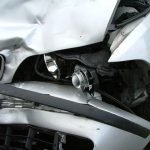It can be difficult for a plaintiff in a New York automobile accident to succeed in a personal injury case when the defendant had the right of way, but it is not impossible. Even a driver who has the right of way has certain duties of care, and if a breach of one or more of those duties causes an accident, the driver may be liable.
 The recent case of Hurst v. Belomme addressed this issue. The plaintiff allegedly sustained injuries in a collision that occurred while she was attempting to make a left turn from the southbound lane of the road. The defendant’s vehicle was traveling north on the same road and struck the plaintiff’s vehicle. The plaintiff sued the defendant to recover damages for her injuries. The defendant moved for summary judgment, arguing the sole proximate cause of the collision was the plaintiff’s negligence. The motion was denied, and the defendant appealed.
The recent case of Hurst v. Belomme addressed this issue. The plaintiff allegedly sustained injuries in a collision that occurred while she was attempting to make a left turn from the southbound lane of the road. The defendant’s vehicle was traveling north on the same road and struck the plaintiff’s vehicle. The plaintiff sued the defendant to recover damages for her injuries. The defendant moved for summary judgment, arguing the sole proximate cause of the collision was the plaintiff’s negligence. The motion was denied, and the defendant appealed.
To win a summary judgment motion in a negligence case, the defendant must show that he was not at fault for the accident. The appellate division noted that there can be multiple proximate causes. The court further pointed out that, although the driver with the right of way can anticipate that the other driver will follow laws requiring her to yield, the driver is negligent if he or she fails “to see what is there to be seen…”
The appellate division found that the defendant did not show that he was entitled to judgment as a matter of law. He had failed to show that he was not at fault for the collision. The appellate division found that there were triable issues of fact regarding whether the defendant violated New York law by not having his headlights on. Additionally, the deposition transcripts also raised issues regarding whether the defendant failed to keep a proper lookout and whether the defendant exercised reasonable care after the plaintiff was in the intersection.
The appellate division found that the trial court had not erred in denying the motion and affirmed the trial court’s decision to deny the defendant’s motion.
Neither the trial court nor the appellate division was willing to find that the plaintiff was at fault for the accident merely because she was making a left turn. The plaintiff’s case has survived summary judgment, but to succeed at trial she will have to show that the defendant’s negligence was the proximate cause of the accident. The court’s opinion indicated there is an issue regarding whether the defendant’s headlights were illuminated. Additionally, evidence that the defendant should have seen the plaintiff in the intersection and had time to stop would support the plaintiff’s claims. Such evidence could include witness testimony and the part of the plaintiff’s car the defendant’s vehicle struck.
An experienced New York car accident attorney can evaluate the strength of a case, even when liability is not clear. If you have been seriously injured in an automobile accident, call us to schedule your appointment.
The Law Offices of Nicholas Rose, PLLC offers free consultations. Call 1-877-313-7673.
Additional Resources:
Hurst v. Belomme, August 24, 2016, Supreme Court of the State of New York Appellate Division, Second Judicial Department.
More Blog Entries:
Summary Judgment on Liability in New York Rear-End Collisions, March 30, 2016, New York Injury Lawyer Blog






